EAOO Program
UWAGA: Wykłady tłumaczone będą na język polski!
- 09:00 - 10:30
- 90 min
- Poznań University of Medical Science (PUMS)
Andrzej Michalski PhD, Katarzyna Dubas PhD
- 09:00 - 10:30
- 90 min
- Poznań University of Medical Science (PUMS)
Maciej Perdziak, PhD
- 09:00 - 10:30
- 90 min
- Poznań University of Medical Science (PUMS)
Hanna Buczkowska PhD
- 09:00 - 10:30
- 90 min
- Adam Mickiewicz University (UAM)
Gregory Caldwell OD
- 09:00 - 10:30
- 90 min
- Adam Mickiewicz University (UAM)
Prof. Anna Przekoracka-Krawczyk PhD, DSc, Alicja Brenk-Krakowska, MSc.
- 09:00 - 10:30
- 90 min
- Adam Mickiewicz University (UAM)
Telamitsi Kyriakos
- 10:00 - 11:00
- 60 min
- Conference Hotel
Petr Veselý
- 10:30 - 11:00
- 30 min
- 11:00 - 12:30
- 90 min
- Poznań University of Medical Science (PUMS)
Andrzej Michalski PhD, Katarzyna Dubas PhD
- 11:00 - 12:30
- 90 min
- Adam Mickiewicz University (UAM)
Joseph Pizzimenti OD
- 11:00 - 12:30
- 90 min
- Poznań University of Medical Science (PUMS)
Maciej Perdziak, PhD
- 11:00 - 12:30
- 90 min
- Adam Mickiewicz University (UAM)
Prof. Anna Przekoracka-Krawczyk PhD, DSc, Monika Kwaśniewska PhD
- 11:00 - 12:30
- 90 min
- Poznań University of Medical Science (PUMS)
Hanna Buczkowska PhD
- 11:00 - 12:30
- 90 min
- Adam Mickiewicz University (UAM)
Telamitsi Kyriakos
- 11:15 - 12:15
- 60 min
- Conference Hotel
Msc Małgorzata Żukowska Swisslens
- 12:30 - 13:30
- 60 min
- Conference Hotel
Gregory Caldwell OD
- 13:30 - 15:00
- 90 min
- 15:00 - 15:15
- 15 min
- Plenary Room / BERLIN
PTOO Representative / EAOO President
- 15:15 - 15:30
- 15 min
- Plenary Room / BERLIN
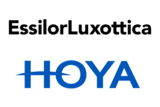
- 15:30 - 16:00
- 30 min
- Plenary Room / BERLIN
- 15:30 - 17:00
- 90 min
- Parallel room 1 / AMSTERDAM
#61 Pediatrics for the Primary Care Optometrist - Marianne Boltz
#05 How to successfully find binocular vision anomalies in young adults - Matic Vogric
#55 Subjective evaluation of patient adaptation to progressive ophthalmic lenses with custom and non-custom designs - Salome Pereira
#20 State of accommodation of young adults with myopia progression - Alicja Szymańska
- 16:00 - 17:00
- 60 min
- Plenary Room / BERLIN
Title: Innovative enabling technologies in optics, optometry and vision science
Matt Jaskulski, PhD, DSc
Clinical research software developer at the Indiana University Clinical Optics Research Lab (IU CORL)
-
 dr Matt Jaskulski
dr Matt Jaskulski
- 17:00 - 17:30
- 30 min
- 17:30 - 18:00
- 30 min
- Parallel room 1 / AMSTERDAM
Betul Tekeli
- 17:30 - 18:00
- 30 min
- Plenary Room / BERLIN
-
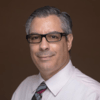 Prof. Joseph J. Pizzimenti
Prof. Joseph J. Pizzimenti
- 18:00 - 19:00
- 60 min
- Plenary Room / BERLIN
-
 dr Matt Jaskulski
dr Matt Jaskulski -
 Prof. Joseph J. Pizzimenti
Prof. Joseph J. Pizzimenti
Moderator: José M. González Méijome
Prof. Jacek Pniewski
Marcin Bartosz Stopa
- 18:00 - 18:30
- 30 min
- Parallel room 1 / AMSTERDAM
-
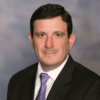 Greg Caldwell OD, FAAO
Greg Caldwell OD, FAAO
- 18:30 - 19:00
- 30 min
- Parallel room 1 / AMSTERDAM
#38 Incorporating Artificial Intelligence in eye screening practice of optometrists – new approach to digital assessment of early symptoms of open angle glaucoma - Andrzej Piotrowski
#33 Study of fixational eye movements in glaucoma using a super-fast eye tracking system - Aleksandra Gorczyca
#23 Assessment of the interactions between the anterior segment of the eye and soft contact lenses as a result of their extended wear - Patryk Młyniuk
#39 Repeatability and reproducibility of corneal epithelial thickness mapping with spectral domain optical coherence tomography using Canny Edge segmentation algorithm - Inese Petrovica
UWAGA: Wykłady tłumaczone będą na język polski!
- 09:00 - 10:00
- 60 min
- Plenary Room / BERLIN
Eyecare in the Changing World: Scaling Up for Impact
Kovin Naidoo, PhD, OD
Professor, Global head of advocacy and partnerships, OneSight EssilorLuxottica Foundation and former CEO, Brien Holden Vision Institute
The World Health Assembly Resolutions, The UN Resolutions, The World Report on Vision, and the growing recognition by non-eye care actors of the importance of good vision, have catapulted Refractive Error in particular, and eye care in general, onto the center stage of global health.
Given this context and the growing unmet needs in eye care and the changing ecosystem of optometry and optics the sector must be both receptive and responsive in order to remain relevant.
This lecture will emphasize the latest global evidence on eye health challenges and the global commitments of the public-private sector to make eye care accessible, equitable, affordable, and effective for everyone, everywhere in the world. This lecture will provide an overview of the achievements and evidence of remaining challenges and opportunities for improved eye care worldwide. It will locate Eye health as a global political, health, and development priority and discuss the central role that optometrists and opticians can proactively play within their professional associations, together with other health professions, and with their governments to achieving the scale that is demanded of us.
Key issues to be addressed are:
How do we scale up refractive services to the next level and create access for everyone?
How do we deploy public health strategies to protect our children from the looming myopia crisis?
How do we develop an integrated approach that brings all sectors together to achieve our goal (systems approach)?
How do we mobilise technology to drive this scale without undermining the role of optometrists and opticians or comprising quality?
How every practitioner, in every part of the globe, including in Europe, can become a part of this process to benefit our patients and societies?
-
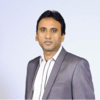 Prof. Kovin Naidoo
Prof. Kovin Naidoo
- 10:00 - 10:30
- 30 min
- Plenary Room / BERLIN
Clara Martinez Perez
- 10:00 - 11:00
- 60 min
- Parallel room 1 / AMSTERDAM
Moderator: Sonja Zinken

- 10:30 - 11:00
- 30 min
- Plenary Room / BERLIN
Sébastien Fricker
- 11:00 - 11:30
- 30 min
- 11:30 - 12:00
- 30 min
- Parallel room 1 / AMSTERDAM
Jeffrey Weaver
- 11:30 - 12:30
- 60 min
- Plenary Room / BERLIN
-
 Greg Caldwell OD, FAAO
Greg Caldwell OD, FAAO
- 12:00 - 12:30
- 30 min
- Parallel room 1 / AMSTERDAM
Timothy Wingert
- 12:30 - 13:00
- 30 min
- Plenary Room / BERLIN
Lorcan Butler
- 12:30 - 13:30
- 60 min
- Parallel room 1 / AMSTERDAM
Moderator: José M. González-Méijome

- 13:00 - 13:15
- 15 min
- Plenary Room / BERLIN
Prof. Bruce JW Evans
- 13:15 - 13:30
- 15 min
- Plenary Room / BERLIN
Prof. Kathryn Saunders
- 13:30 - 14:30
- 60 min

- 14:30 - 15:30
- 60 min
- Parallel room 2 / LONDYN
- 14:30 - 15:30
- 60 min
- Plenary Room / BERLIN
Title: Nutrition and the Eye
Greg A. Caldwell, OD, FAAO
Diplomate of the American Board of Optometry (ABO), member of the Optometric Glaucoma Society (OGS), member of the Optometric Wellness and Nutritional Society (OWNS)
Carotenoids are nutrients that have been proven to protect the eye from light damage and several ocular pathologies. Their antioxidative protection is at the molecular level and are most recognized in age related macular degeneration. Many ocular and retinal diseases are linked to low levels are carotenoid levels. However, the retina is a highly metabolic tissue under constant assault. This course will review carotenoids and the comprehensive nutritional antioxidant network needed, how to assess their levels, and identify the patients that would benefit from diet, lifestyle, and macula and full retina supplementation. This course will provide patient cases to the audience.
Ocular Nutrition – Tying, Structure, Function, and Molecular All Together in the Changing World
Early detection, prevention, and wellness is not only trending but is now expected by our patients. Oxidative stress and damage are the hallmarks of chronic disease which is easily identified with our current and new instruments and technologies. This course will introduce and review concepts of integrative and complementary medicine and provide clinicians with clinical pearls, diagnostic interpretation and approaches, present-day and recently approved nutraceutical and therapeutic opportunities, and guidance on becoming a great Integrative Optometrist.
-
 Greg Caldwell OD, FAAO
Greg Caldwell OD, FAAO

- 14:30 - 15:00
- 30 min
- Parallel room 1 / AMSTERDAM
-
 Gabi Steenbekkers
Gabi Steenbekkers

- 15:00 - 15:30
- 30 min
- Parallel room 1 / AMSTERDAM
MyCon, the new Rodenstock solution for children with myopia
MyCon is a Rodenstock spectacle lens designed to correct myopia and to control the progression of myopia. The central area and the upper and lower parts of the lens are designed for central foveal vision to correct myopia. The nasal and temporal areas of the lens have continuous increasing plus power to focus the light in front of the peripheral retina and reduce contrast to slow down the progression of myopia. The presentation will explain the technical concept and the scientific background.
Gregor Esser
- 15:30 - 16:30
- 60 min
- Parallel room 1 / AMSTERDAM
#41 Can proper nutrition relieve digital eye strain?: Nutrition in digital eye strain - Anna Kraśnicka
#28 UK Eye care practitioner experiences of using technology to improve medication adherence in glaucoma: A qualitative study using the Theoretical Domains Framework - Deborah Bott
#08 Clinical Examination of Papilloedema vs Pseudopapilloedema in 2023- Learning from Diagnostic errors - Lorcan Butler
#57 The influence of optometric visuomotor training on soccer skill performance of young soccer players - Luiza Krasucka

- 15:30 - 16:30
- 60 min
- Parallel room 2 / LONDYN
- 15:30 - 16:30
- 60 min
- Plenary Room / BERLIN
-
 Prof. Kovin Naidoo
Prof. Kovin Naidoo
Moderator: Eva Lazuka
Liliana Stankova, EAOO President
Matjaž Mihelčič, ECOO President
Fiona Anderson, IOA President
Dominika Olkowska, PTOO President
Susan Cotter, AAO President
Kovin Naidoo
- 16:30 - 17:00
- 30 min
- 17:00 - 18:00
- 60 min
- Parallel room 2 / LONDYN
#06 The use of protocols and informed consent for contact lens instructions in the Netherlands and Belgium. - Maurice Heunen
#26 Scleral lenses: what did we learn during the last 10 years? - Langis Michaud
#42 Optometrist’s Approach to Meibomian Gland Dysfunction: Diagnostic Modalities and Patient Care Options - Beata Lewandowska
#30 Role of corneal epithelial thickness mapping in monitoring the effects of overnight orthokeratology - Jagoda Rzeszewska-Zamiara
- 17:00 - 18:00
- 60 min
- Plenary Room / BERLIN
-
 Prof. Joseph J. Pizzimenti
Prof. Joseph J. Pizzimenti
- 17:00 - 18:30
- 90 min
- Parallel room 1 / AMSTERDAM
Joint AAO/EAOO Symposium
Title: Prescribing for Childhood Hyperopia: Top Tips & Considerations
Susan Cotter, OD, MS, FAAO
Southern California College of Optometry, Marshall B Ketchum University
Kathryn Saunders, PhD, FCOptom
Centre for Optometry and Vision Science Research, School of Biomedical Sciences, Ulster University
When testing older children and adult patients, optometrists make decisions about the importance of refractive error and the need for spectacle correction based primarily on symptoms and the impact of refractive correction on visual acuity.
These parameters are less helpful when testing infants or young children when the visual system is maturing rapidly and there is a risk for the development of strabismus, amblyopia, and other visual anomalies. The magnitude of refractive error is only one consideration when deciding whether to prescribe a refractive correction and how much to prescribe for young children. Other factors, including age, accommodative function, binocular status (eye alignment and stereopsis), behavioral signs or symptoms, and academic performance, are essential components in the eyecare professional’s decision-making.
In this lecture, we will discuss the ‘why,’ ‘when,’ and ‘how much’ aspects of prescribing for childhood hyperopia and provide evidence-informed ‘top tips’ that we use in our clinical practice. We will review key objective methods for assessing accommodative function in young patients and how these measures inform our decision-making when managing typically developing hyperopic children and those with developmental disabilities. We will include patient cases for discussion.
-
 Susan Cotter
Susan Cotter -
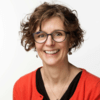 Kathryn Saunders
Kathryn Saunders
- 18:00 - 18:30
- 30 min
- Parallel room 2 / LONDYN
Sonja Zinken, Dinah Paritzky
- 18:00 - 18:30
- 30 min
- Plenary Room / BERLIN
-
 dr Matt Jaskulski
dr Matt Jaskulski
- 20:30 - 23:59
- 209 min
- Plenary Room / BERLIN
UWAGA: Wykłady tłumaczone będą na język polski!
- 09:00 - 09:30
- 30 min
- Parallel room 1 / AMSTERDAM
Matjaž Mihelčič
- 09:00 - 10:00
- 60 min
- Plenary Room / BERLIN
-
 Prof. Joseph J. Pizzimenti
Prof. Joseph J. Pizzimenti
- 09:30 - 10:00
- 30 min
- Parallel room 1 / AMSTERDAM
Zoe Richmond
- 10:00 - 10:30
- 30 min
- Plenary Room / BERLIN
Dinah Paritzky

- 10:00 - 10:30
- 30 min
- Parallel room 1 / AMSTERDAM
Visionix - wykład TBA
dr Sylwia Kropacz - Sobkowiak
- 10:30 - 11:30
- 60 min
- Parallel room 1 / AMSTERDAM
- 10:30 - 11:00
- 30 min
- Plenary Room / BERLIN
Svetlana Semjonova
- 11:00 - 12:00
- 60 min
- 11:30 - 13:00
- 90 min
- Parallel room 1 / AMSTERDAM
Moderator: José M. González-Méijome
- 12:00 - 12:30
- 30 min
- Plenary Room / BERLIN
Giancarlo Montani
- 12:30 - 13:00
- 30 min
- Plenary Room / BERLIN
David Berkow
- 13:00 - 13:30
- 30 min
- Plenary Room / BERLIN
Langis Michaud
- 13:00 - 14:00
- 60 min
- Parallel room 1 / AMSTERDAM
#16 A novel tool to monitor myopia control - Birte Graff
#11 Peripheral Retina Refraction-Can it Help! - David Berkow
#15 Safety of DIMS spectacle lenses in combination with atropine in the combination therapy of myopia progression - Ann-Isabel Mattern
#37 The impact of the vergence-accommodation conflict during the 30-minute VR session on the parameters of fusional vergence ranges and phoria - Maciej Dymczyk
- 13:30 - 14:00
- 30 min
- Plenary Room / BERLIN
Síofra Harrington